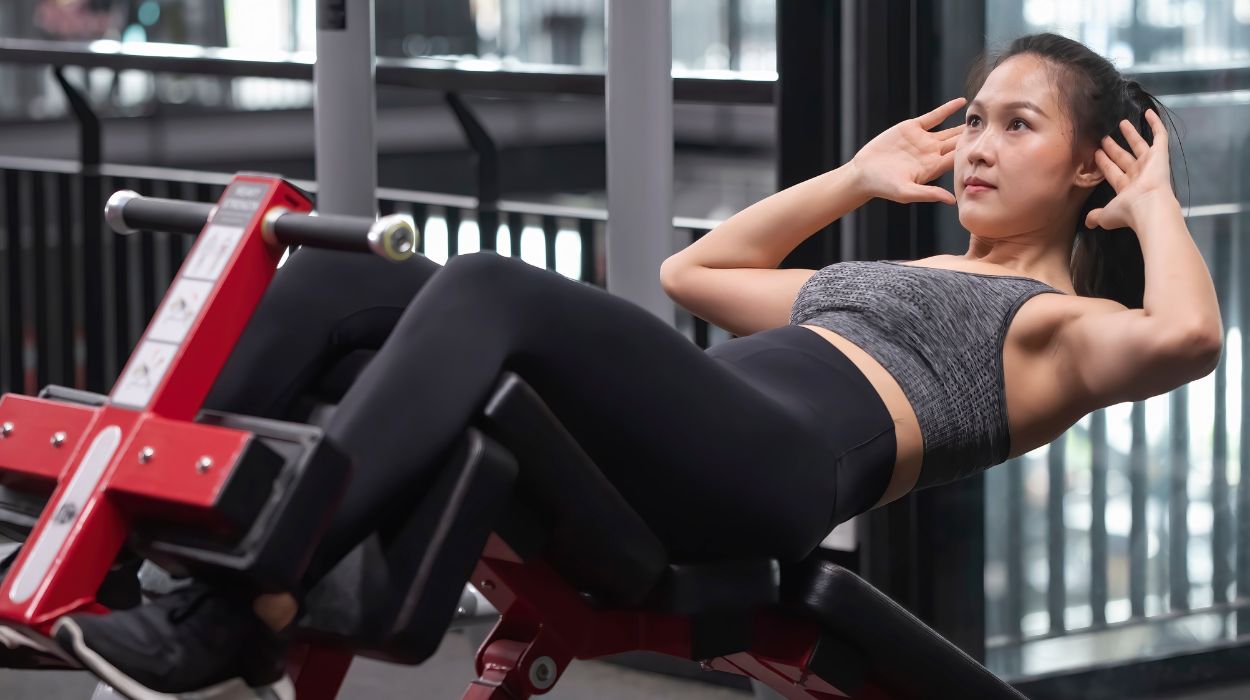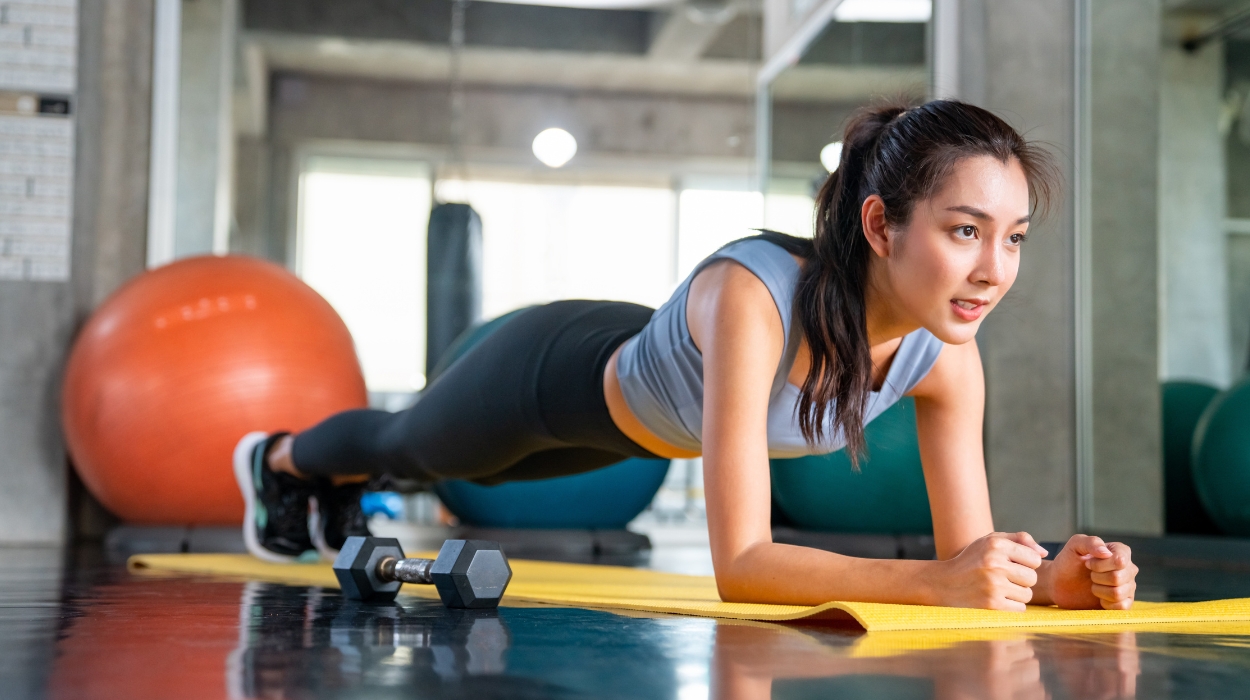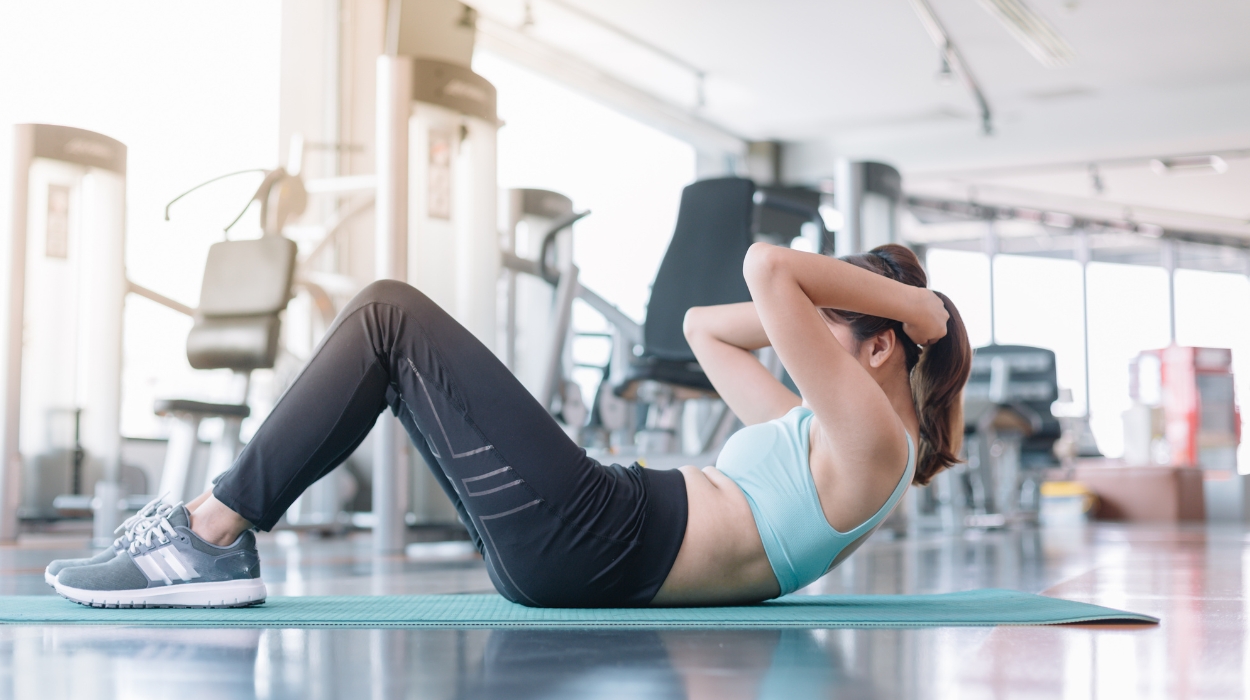Sit-ups are a popular core exercise aimed at developing abdominal strength. This staple exercise can be commonly observed in many weight loss programs. From basic workouts for everyday individuals to featuring in endurance tests, it’s clear there’s merit to this exercise.
The ability to perform this exercise using only your body weight contributes to its popularity. Further, it requires minimal space and is suitable for at-home workouts, providing an accessible option for individuals with limited space or who can’t access a gym.
The ordinariness of this exercise may lead individuals to wonder how many sit-ups a day are needed to lose weight. However, additional factors need to be considered when it comes to losing weight. For an informed approach, read on to learn about weight loss, sit-up truths, and lifestyle factors before considering diet pills.
Do Sit-Ups Really Help You Lose Weight?
- Sit-ups alone do not directly lead to weight loss.
- Sit-ups can help increase core strength and endurance.
- Some benefits of sit-ups include low cost, accessible movement, requiring only body weight to perform and can be included in various workouts.
- Sit-ups can help you lose weight if you maintain a calorie deficit and incorporate regular exercise into your routine.
- An effective combination for weight loss is aerobic exercise and strength training.
How Many Sit-Ups Should You Do To Lose Weight?

There is no exact number of sit-ups that you should do to lose weight. Before determining an exact number, you need to consider several factors. Both your diet and other exercises play a role in weight loss.
Sit-ups alone will not result in drastic body composition changes. While including sit-ups in your workout routine will burn some calories, fat loss depends on a negative energy balance. In simple terms, energy balance[1] is when calorie intake equals calories burned.
To achieve weight loss you need to have a negative energy balance for a reasonable period of time. A negative energy balance, also known as a calorie deficit, can be achieved through physical activity and reducing calorie intake. If these factors seem overwhelming, a simple starting point is establishing a healthy diet.
Healthy diets tend to feature[2] an abundance of fruit, vegetables and whole grains, which coincidentally support a healthy body weight. Maintaining proper nutrition by including healthy fats and an adequate protein intake also support fat loss results. Adequate protein intake plays a vital role in developing and maintaining lean muscle mass, which increases metabolic rate.
A higher metabolic rate results in more calories burned, even at rest, helping promote a negative energy balance. Therefore, to lose fat, simply performing abdominal exercises alone is not enough; you must lose overall weight. If you’re unsure, establishing an exercise routine with help from a certified personal trainer will help effectively burn calories.
Including strength training and cardio exercise in your workout routine, with a calorie-controlled diet, is shown to be effective.
Benefits Of Sit-Ups
Including sit-ups as part of your training routine offers various benefits beyond core strength,[3] contributing to overall fitness and well-being. Strong abdominal and core muscles positively influence posture, low back pain[4] and protect the spine. Moreover, a well-built trunk is vital for physical and sports performance.
Benefits of sit-ups include:
- They can be performed using only your body weight and do not require any additional equipment.
- They can be performed at home, with minimal space.
- The intensity and muscle engagement[3] can be increased by slowing the lowering phase of the movement.
- They can help improve abdominal muscular endurance.
- They can increase hip flexor strength and endurance
- They can help improve core strength, enhancing physical function and reducing injury risk.[5]
- They can be included in a variety of training programs and different workout styles.
How Long Does It Take To See Results From Sit-Ups?
To see results from sit-ups, overall body fat percentage needs to be reduced. Although sit-ups can contribute to strengthening the core muscles, a multi-faceted approach is required to achieve results. Creating a calorie deficit through a healthy diet and following a consistent workout routine will decrease body weight.
The CDC[6] suggests that the general time frame for sustainable weight loss is approximately one to two pounds lost per week. However, it is essential to note that everyone will experience results differently. Therefore, how long it takes to lose weight should be considered a guide only, with individual variation likely to occur.
Doing sit-ups without making other lifestyle adjustments to activity levels or diet makes it challenging to see noticeable results. Maintaining a calorie deficit, regular aerobic exercise and strength training, proper nutrition and adequate sleep encourage weight loss. If all factors are met for a prolonged period, without results, stress management or fat burners could be explored.
How To Do Sit-Ups To Lose Weight
To perform sit-ups:[7]
- Lay flat on your back with your knees bent.
- Your hands can be positioned behind your head, by your sides, or on your thighs.
- Lift your torso off the ground until all of your back isn’t touching the floor.
- Ideally, your elbows need to reach your knees.
- Lower back to the start position with shoulders resting on the floor.
Note that resting your hands on your thighs while reaching for your knees during the upward movement is often called a crunch. There’s a subtle difference between movements and some individuals may wonder how many crunches a day are needed to lose fat. An effective workout routine incorporating various exercises, consistent calorie burning, and a balanced diet is crucial for reducing fat.
Of course, ensuring you maintain proper form during any exercise is an important consideration. Good technique during sit-ups or crunches engages the relevant muscles effectively while limiting potential injury risk.
Things To Consider
Are Sit-ups A Suitable Exercise For You?
Sit-ups contribute to increased abdominal and hip flexor muscle strength, but they may not be appropriate for everyone. The action of flexion and extension during the exercise, results in force[8] on the lower back and spine. Starting with a different exercise is a sensible approach if you have ongoing lower back issues.
Have You Established Your Weight Loss Goals?
Establishing your goals and desired outcomes creates a clear roadmap of what you can do to achieve them. Before blindly trying the latest weight loss trend, consider your desired outcome, timeframe and willingness to make lifestyle changes. Establish the areas of your life that need to be improved and what habits you may find difficult to adjust.
Being honest about your current situation, potential challenges, and readiness to change may foster a more productive outlook. Rather than setting unattainable goals, this approach helps avoid disappointment and keeps you on track for success.
What Type Of Exercise Do You Enjoy?
Another helpful tip for your long-term success is choosing exercises you enjoy doing. Trying to force yourself to do something can often make the entire process feel even more challenging. If you find activities you enjoy, you’ll likely engage in them more,[9] which could significantly impact your results.
Alternative Exercises To Sit-Ups

Many excellent alternative exercises engage the core muscles in different ways. While sit-ups can have a place, an effective workout should comprise a balanced mix of exercises. Furthermore, they may not be suitable[10] for some individuals.
Incorporating other exercises, whether in place of sit-ups or to complement your routine, effectively helps develop balanced, strong core muscles. Consider implementing the following exercises into your workout routine. Rotate through a few for a few weeks, then try new ones to keep your exercise routine interesting.
Regardless of which you choose, these exercises are excellent for building a robust core.
- Curl-up.
- Lying leg raises.
- Lying bent knee raises.
- Plank hold.
- Bicycle crunches.
- Hollow hold.
- Deadbug.
- Bear plank.
- Shoulder taps.
- Hanging knee raises.
- Prone curl-ups with a medicine ball.
- Hanging leg raises.
- Flutter kicks.
- Kettlebell pull-through.
A general starting point could be to choose and complete two exercises at the end of your workout. Completing two to three sets of five to ten reps is adequate. Alternatively, you can choose a time to work for or challenge yourself.
Conclusion
Do crunches burn belly fat? Do sit-ups burn belly fat? Two common questions individuals may ask when seeking to achieve their desired body composition goals of a defined midsection.
Hopefully, by now, it will have become clear that fat loss requires more of a comprehensive approach. While sit-ups are a popular core exercise to improve abdominal strength and endurance, they will not result in weight loss. Successful weight loss requires a multi-faceted approach.
Maintaining a calorie deficit through healthy eating and incorporating cardio and strength training in your exercise program will support fat-loss. Additionally, factors like sleep are also important. If, after some time, you start to plateau, strategies such as well-researched supplements are a potential solution.
Also keep in mind remember that a sustainable rate of weight loss is approximately one to two pounds per week. Setting realistic goals contributes to a more positive experience.
Sit-ups can be present in your program. However, other exercises that work different areas of your core will help ensure it’s well-balanced, contributing to overall function. Finally, maintaining proper form during any exercise is essential to engage muscles effectively while minimizing the risk of injury.
Frequently Asked Questions
Sit-ups alone won’t directly reduce belly or abdominal fat. Spot reduction is, unfortunately, not an effective method when it comes to fat burning. You will need to lose overall body fat through a calorie deficit.
No exercise directly results in a flat stomach. Core strengthening exercises can help increase the muscle thickness of abdominal muscles, promoting a defined appearance. Aerobic exercise, strength training and a proper diet are needed to reduce abdominal fat.
Depending on the amount, it might be okay. However, you’d likely experience greater benefit from a well-planned training program. Developing a strong core by including various core exercises in a regular weight training routine could produce more desirable results.
 Evidence Based
Evidence Based
